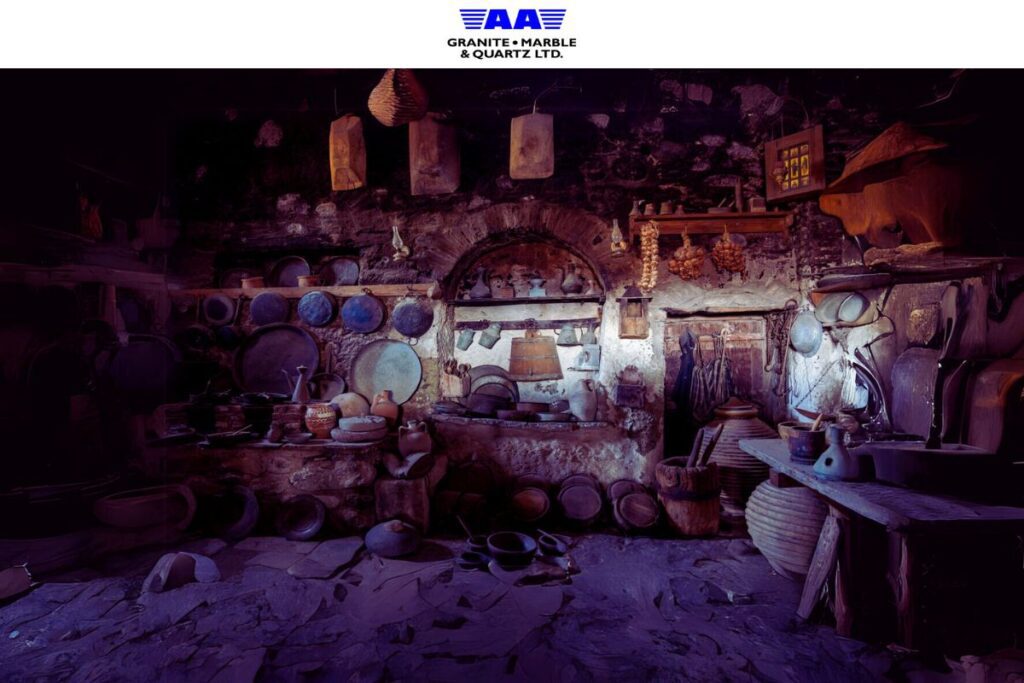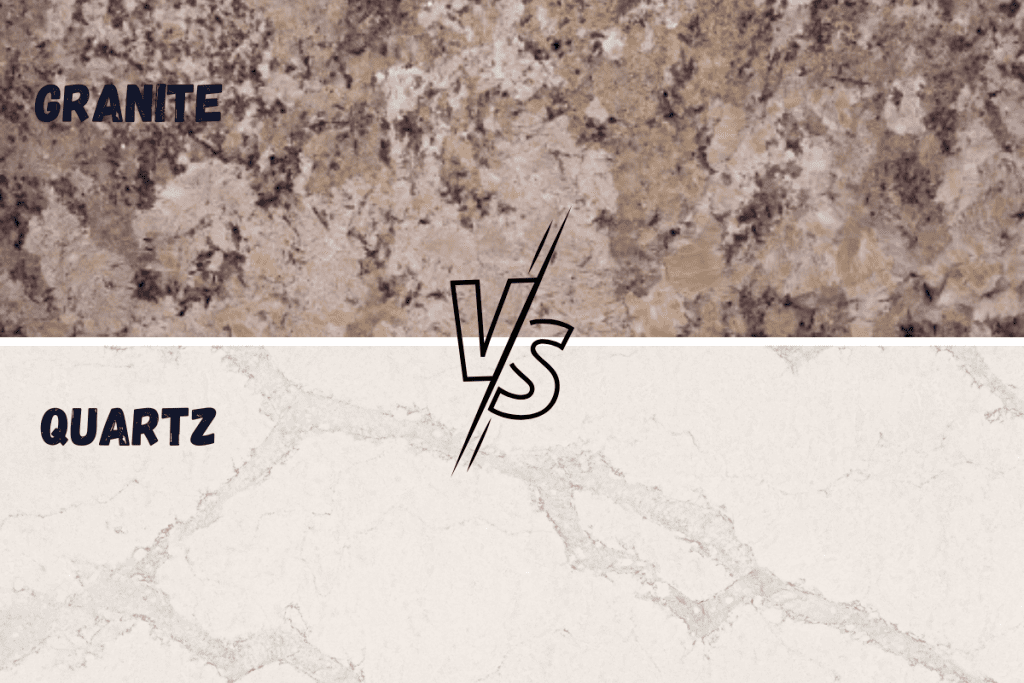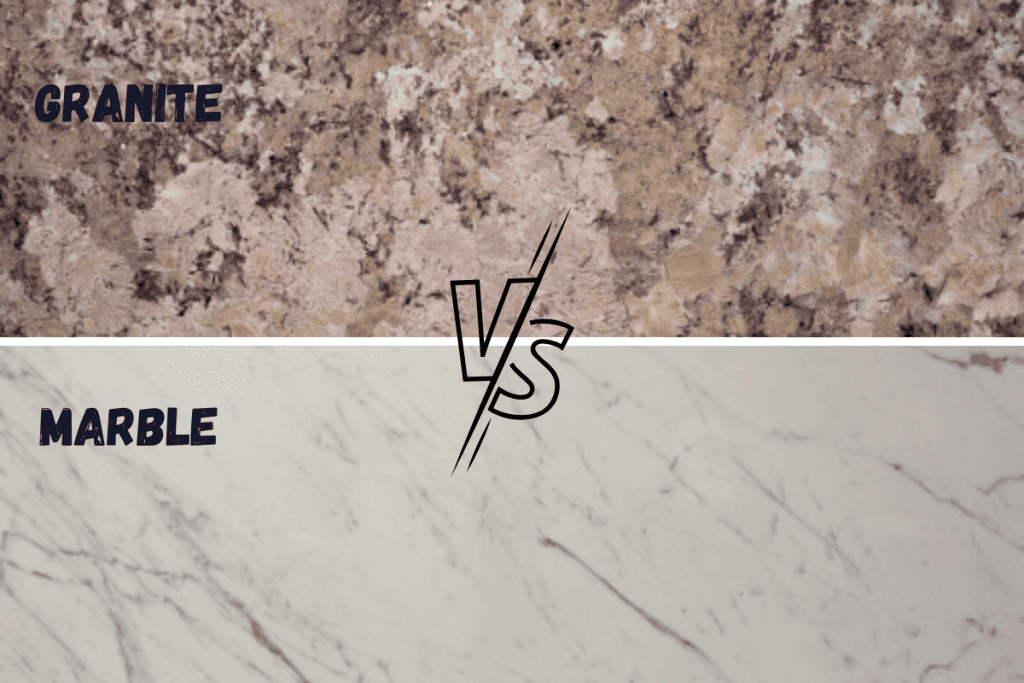If there is one thing in both the home and workplace that we all use but never really think about, it us the countertop. You may notice the beautiful finish on a countertop once in a while, but in general, they are just there whenever we need them, and that is that.
Yet countertops have been there throughout our history, and in many ways their evolution mirrors the way society itself has changed over the years too. Countertops are an essential part of the day at home, and for many businesses too, so we should understand the journey that took us to this point with countertops, and how they have supported life throughout history.
When Did The Earliest Countertops Come To Be?
Strictly speaking, the very first countertop was probably a rock next to a stream, but in terms of indoors, then a stone hearth next to a fireplace would have been the basic work surface for hundreds of years. It was only when we began constructing houses with multiple rooms and dedicated kitchen areas that things changed.
Before around 1880, the majority of kitchens were unfitted, that is, they just had mostly freestanding furniture. Photos from the era as well as written descriptions tell us that there was a worktable, usually as large as could fit into the room.
In some more affluent homes, there would also be a separate dough table for making bread. While these pieces of furniture had tops, you would be hard pressed to call them countertops, and were simply the surface of the table itself.
In most cases, this would be the same wood used in construction of the furniture, giving a very utilitarian look that fits well with the times. For poorer people, this was easy to create, which was the main priority. Even the wealthy didn’t give much thought to aesthetics as they employed servants to take care of food preparation and were unlikely to visit the kitchens very often.
However, things changed in the late 1800s, as industrial development created a new class of wealthy individuals who started to fund societal change. In particular, the sponsorship of the sciences began to build our understanding of illness, and with it ideas that would change our homes, and kitchens, forever.
The 20th Century
Countertops as we know them started to appear in the early 1900s. This was driven by the understanding of diseases, and in particular the way germs were connected to illness. The reaction to these scientific discoveries became known as the Sanitary Movement, and it began to influence how kitchens were designed.
It is from here you will find countertops as we recognise them today, although they tended to be much smaller than we are used to.
The earliest of these countertops would be found around the sink area, or perhaps as a surround to a cabinet at working height. They were mostly made from wood, and lacked the storage arrangements below that we take for granted today, but the idea of a dedicated, permanently fixed work surface began to grow in popularity.
In seeking more sanitary approaches, the kitchen walls were often tiled, and eventually those tiles spread to the countertop surfaces too. These were usually coloured white, the idea being that dirt and potential places for germs, were easily seen, but bolder colours, and especially bright grouting, was a trend that grew in popularity.
Countertops after World War 1
After The Great War, economies boomed and the use of servants became much less common, with families transitioning to their own meal preparation and other tasks. The concept of pre-prepared food also started to take hold too, and with it a need for more storage in the home.
It is this need that drove the first modular cabinetry and under counter storage that we expect to see in kitchens today. Sitting on top of that storage and the same wooden countertops and tiling, with patterns and colours now becoming the most common options.
You would often see trending colours, such as Blue and White, or Green and Yellow, with tiles now being made specifically for countertops. That meant new shapes too, with hexagonal tiles, or smaller, square tiles offering a different look, all sharing a trait of very narrow grout lines to avoid dirt traps.
It is here in the 1920s that we begin to see more exotic materials making an entrance into the average home. While the very wealthy had long enjoyed the beauty of Marble or Granite for surfaces in their homes, it remained out of reach for most due to the cost.
However, by using in specific locations, such as a drop in work surface for working with dough, marble began to find its way into homes. At the budget end, instead of tile wooden surfaces would be covered with linoleum material, often scraps from a flooring project.
In the commercial world, wooden countertops were still the most commonly seen, but were increasingly covered in metal sheeting, using an alloy called Monel. This provided an easy to clean, hygienic and hard-wearing environment for a commercial kitchen.
In the 1930s new materials began to appear as scientists experiments with plastics. Melamine, a type of resin, makes its first appearance in the early years of this decade, you may know it as Formica today.
Along with plastics, it started to make an appearance in kitchen furniture, but a combination of recession and the build up for war meant that few new ideas were gaining commercial traction as the thirties progressed.
Boomtime – Countertops in the 1940s and 50s
There is arguably no time in modern history that can match the post World War 2 period for innovation in every industry and transformation of living standards.
Immediately post was in the 1940s little had changed in terms of countertops, with tiled surfaces still dominating as the new materials tried to gain traction. However, as post war optimism drove society forwards, it is unsurprising that the biggest change here was colours.
Brighter, bolder colours were appearing everywhere, and the countertop tiling was no different. Patterning became bolder too, matching the mood of the times, but it will be the next decade that really changed things forever. Formica began to build market share, bringing new colours and designs, including eventually schemes that mimicked the natural beauty of real stone, whether that was Marble or Granite.
It is here where we see other materials become more commonplace, at least in the expensive end. While Formica and plastics would dominate the countertop market for the rest of the century, more affluent homeowners began to look at the idea of a dedicated countertop and search for something to suit.
Real stone countertops had been seen in palaces and mansions before, but here in the 1950s was the first time it became a commercial product for home consumption. For those with the means, it gave all the convenience of the modern kitchen with its undercounter storage and everything else they were looking for, while offering a luxurious material that stood out from the plastics most of the market was using.
Little changed for the next fifty years, a variety of manmade materials dominated countertop construction, while genuine stone remained a luxury choice at the top of the market. However, the 21st century brought with it some changes, and today things are a little different.
How do Countertops Look Like Today?
Real stone countertops are created by craftspeople and built to last, they are never going to be at the cheap end of the kitchen countertop market. However, while manmade countertops still make up the vast majority of the market, Marble, Quartz and Granite worktops today are more accessible than ever.
Advances in mining and construction techniques mean that beautiful countertops are now within reach for many more people, and they are deciding it is a great investment. Engineered stone, cut marble, even toughened glass are now options for countertops, creating new design opportunities that take kitchens further than ever before.
Conclusion
Throughout our history, kitchen countertops have advanced as we have. From awareness of the importance of hygiene to the introduction of plastics and resins, as new discoveries brought changes to the world, our kitchens followed suit.
Now, as we look for sustainable ways to exist, real stone and natural colours and styles are transforming kitchen design, bringing countertops firmly into the new century.




